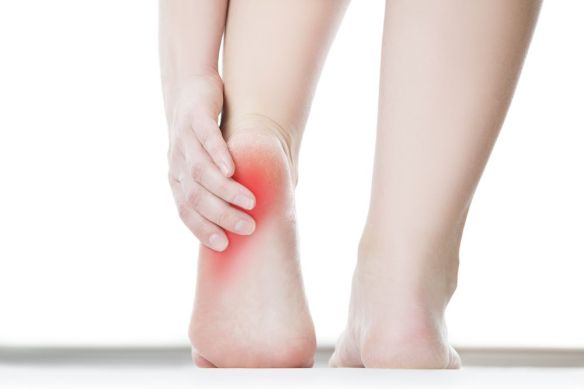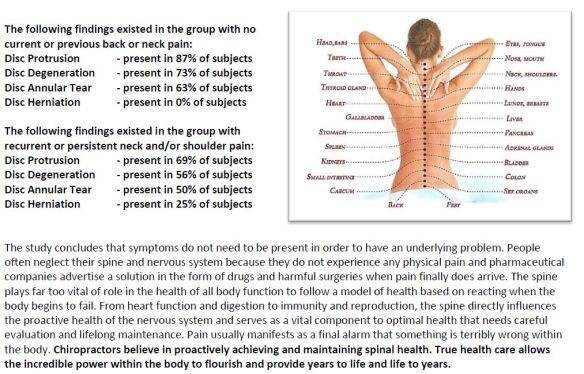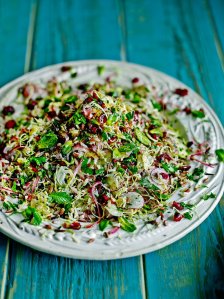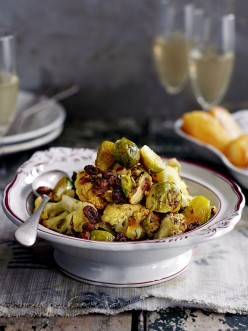The TRUTH about Potatoes, Glycemic Index, and “White Foods” — Do they help or hurt Fat Loss?
 by Mike Geary, Certified Nutrition Specialist, Certified Personal Trainer
by Mike Geary, Certified Nutrition Specialist, Certified Personal Trainer
Author of best-sellers: The Fat Burning Kitchen & The Top 101 Foods that FIGHT Aging
I’d like to start a little discussion today about carbohydrates… and in particular, “white foods” as well as potatoes. One reason I wanted to mention this is because so many health and fitness professionals trash talk potatoes about being a bad carbohydrate choice because of the high glycemic index. Some even say such ridiculous things as “avoid any and all white carbohydrates”.
Ok, now while I certainly agree that white bread and refined white sugar are two of the worst things we can be feeding our bodies, I definitely don’t agree with avoiding any and all “white carbohydrates”. Now I know all of the buzz lately has been about colorful foods and the protective antioxidants that they contain. They tell you to focus on colors and stay away from white.
“White Foods” aren’t necessarily always the enemy
It’s true that colorful foods are great, but it is a big mistake to specifically avoid white foods! There are plenty of white foods that have specific nutrients that are hard to find elsewhere. Let’s look at a few examples…
Onions & Garlic
What about onions and garlic? They are both white and they are chock full of protective phytonutrients, vitamins, and trace minerals that aren’t easy to find elsewhere in a normal diet… such nutrients as allicin, quercetin (an important flavonoid), chromium, and other unique anti-inflammatory nutrients.
In fact, onions are so powerful for our health, that one study of centenarians (people that live to over 100 years old) identified that a common thread of these amazingly healthy individuals was that they ate a lot of onions throughout their lives. And we also know that garlic is one of the most powerful substances for a strong immune system, among other qualities.
Cauliflower
Another example of something white that is great for you is cauliflower. Cauliflower is loaded with vitamin C, fiber, minerals, and special compounds such as glucosinolates and thiocyanates, which are specifically abundant in cruciferous vegetables such as broccoli, cauliflower, and cabbage. And a little-known fact is that some of the compounds in cruciferous vegetables help to combat other estrogenic compounds in our food supply and environment and can help prevent excess belly fat. So eat up on that cauliflower!
Mushrooms
Not many people realize this, but surprisingly, even white mushrooms have high levels of unique nutrients and antioxidants. White mushrooms are high in a couple types of antioxidants called polyphenols and ergothioneine. And some types of mushrooms, such as portobella mushrooms, are surprisingly good sources of Vitamin D.
Potatoes
Now that also leads us to another example – white potatoes (which by the way, can also be found in red, yellow, purple varieties, etc). Many health professionals claim that potatoes are a bad carbohydrate because they are thought to have a high glycemic index. First of all, if you’ve read my Fat Burning Kitchen ebook, then you understand that glycemic index is not necessarily the most important factor in choosing your carbohydrates.
While a generalization can be made that most low glycemic index carbohydrate choices will help you lose body fat easier than high glycemic index choices, it is not all that it’s cracked up to be. There are many other factors that determine how your body will react-to and process the carbohydrates you ingest, such as glycemic load and also how you combine the high GI food with other foods such as protein, fiber, and fats, which all slow down absorption of the ingested carbs.
For example, using glycemic load as an example… it is known that watermelon has a high glycemic index. However, the glycemic load of a normal serving of watermelon is just way too low for your body to start packing on body fat just because you ate a high glycemic index fruit. You would have to eat such an enormous quantity of watermelon just to get enough grams of carbohydrates to have any negative glycemic effect, that it is just non-sensical.
Not to mention that watermelon is also a great source of vitamins, minerals, and lycopene. There’s just no reason to avoid it simply because it has a high GI. My point is… candy bars, cupcakes, and donuts make you fat… NOT watermelons, carrots or potatoes… French fries excluded of course, since those are typically fried in highly inflammatory cooking oils.
Also, as i mentioned, food combinations are important in how your body processes the carbohydrates and the associated blood sugar and insulin response you receive. For example, if you mix a high glycemic index carbohydrate with an extra source of fiber,healthy fats, or even certain proteins, many times the blood sugar and glycemic response will be slowed down considerably by the way you combined the food.
Alright, so back to my point that white potatoes are actually a healthy carbohydrate as long as you eat them in the right form… and please don’t ruin them by deep frying them into french fries either! French fries are one of the most evil things ever invented for your health, but only because we ruin them by soaking them in a scorching bath of trans fats in the deep fryer from the refined or hydrogenated vegetable oils that are typically used.
Keep in mind that potatoes contain so many vitamins and minerals that the list is way too long to even try.
One Warning though about potatoes: Please note that potatoes do contain low level toxins called glycoalkaloids (it’s the plant’s protection mechanism) that are concentrated in the skin, so it is a good idea to always peel potatoes before making any dishes with them. This article explains about the toxins in potatoes and how to still enjoy potatoes while minimizing the toxins.
Will 7-9 potatoes per day make you fatter?
On the topic of potatoes not being so bad after all, I don’t remember where I saw this referenced, but I recently saw a particular study that had participants eat about 7-9 whole potatoes per day for several weeks.
At the conclusion of the study, the potato eaters had actually consistently lost weight! I’d venture a guess that the reason the people lost weight is that they were probably so full from eating all of those damn potatoes, that they actually consumed less calories than normal! An average sized potato only has about 100-120 calories, and I can surely imagine you’d be full constantly from eating 7-9 potatoes each day.
Of course, this does NOT mean that french fries are okay to eat! Those will only make you fat, and the inflammatory trans fats will lead to an early death. Seriously… fries are one of the most deadly foods in our food supply. Plus, deep fried potatoes build up dangerous acrylamides from the frying oil reacting with the starch, and these compounds are carcinogenic.
Anyway, back to the 7-9 whole potatoes per day… Now I would never recommend going to those extremes, but my point is that an occasional potato a couple times a week is not going to hurt your efforts to get lean, especially if you combine it with some other fibrous vegetables and maybe a healthy fat and some protein. On that note, I have one of my favorite recipes for you, using potatoes.
Geary’s Lean-Body Potato Side Dish:
- Desired quantity of baby potatoes (I like to use this mixture I found recently at a health food store… it is a mixture of white, red, yellow, and purple baby potatoes)
- 1 red pepper
- 1 green pepper
- 1 yellow pepper
- 1 or 2 onions
- a couple cloves of garlic, finely chopped (or mashed garlic from a jar, organic preferably)
- 1 or 2 Tbsp extra virgin olive oil, grass-fed butter, and/or virgin coconut oil (sometimes I mix a bit of all 3)
- a little salt and pepper to taste (I like using a sea salt instead of normal commercial salt)
Cut the baby potatoes into slightly smaller pieces and place in a steamer until soft all the way through. Slice up the peppers and onions into strips and add with the chopped garlic into a pan with the olive oil and/or butter and/or coconut oil. Cook the peppers, onions, and garlic until tender, and then add the steamed baby potatoes. Stir it all together and serve. This is a delicious and healthy side dish that goes great with chicken or grass-fed red meat.
I hope you’ve enjoyed this little topic today about potatoes, healthy carbohydrates, glycemic index, and my awesome healthy potato recipe idea!
If you enjoyed this article today, feel free to share this page with your potato-loving friends and family.


 Plantar fasciitis causes pain in the bottom of the heel. The plantar fascia is a thin, ligament that connects your heel to the front of your foot.
Plantar fasciitis causes pain in the bottom of the heel. The plantar fascia is a thin, ligament that connects your heel to the front of your foot. g.
g. This pose is a low back saver and is the hunch reducer. Do it for your posture, do it for your pain, and do it because it feels so good.
This pose is a low back saver and is the hunch reducer. Do it for your posture, do it for your pain, and do it because it feels so good.


 Lean Red Meat
Lean Red Meat
 Chocolate
Chocolate Shellfish
Shellfish Avocado
Avocado Fatty Fish
Fatty Fish





 Mixed Vegetables
Mixed Vegetables







 lt and Cinnamon Chips
lt and Cinnamon Chips 



 —it’s your reaction to it that matters!
—it’s your reaction to it that matters! sad or depressed. Frustration, or a sense of powerlessness at work, is a common form of emotional stress.
sad or depressed. Frustration, or a sense of powerlessness at work, is a common form of emotional stress. chemical. Because not everyone reacts. Symptoms can appear when you lose your ability to adapt. Chiropractic care has helped millions reduce or eliminate reactions to many types of chemical stress
chemical. Because not everyone reacts. Symptoms can appear when you lose your ability to adapt. Chiropractic care has helped millions reduce or eliminate reactions to many types of chemical stress